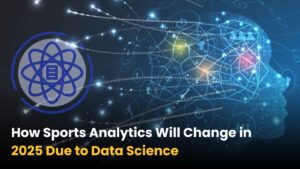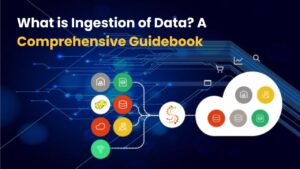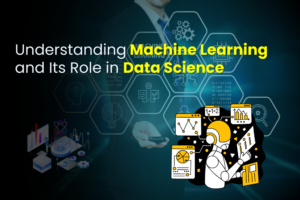Organizations are using state-of-the-art technology to extract valuable insights from large datasets in today’s data-driven environment. One of the most powerful technologies in artificial intelligence is machine learning (ML), a discipline that enables computers to learn and develop from experience without explicit programming. When integrated with data science, machine learning becomes a critical driver of predictive analytics, automation, and smart decision-making.
This article delves into what machine learning is, its types, its importance in data science, real-world applications, challenges, and how professionals can build a career around this impactful technology.
Data science blends statistical analysis, machine learning, and AI to extract insights from data. Learn about tools, techniques, and applications that shape data-driven decisions.
What is machine learning?
Machine learning (ML), a branch of artificial intelligence (AI), focuses on developing algorithms that can learn from and make decisions based on data. Machine learning (ML) systems recognize patterns and make judgments with little assistance from humans, in contrast to traditional programming, where the system adheres to preset rules.
A simple way to understand ML: Instead of writing code to tell a computer how to perform a task, you feed it data and let it learn how to do the task itself.
Types of Machine Learning
Machine learning is commonly categorized into four types, each with distinct methodologies and applications:
1. Supervised Learning
In supervised learning, algorithms are trained using labeled data. A model that has been trained to identify spam emails, for instance, makes use of past data that has been classified as “spam” or “not spam.”
Examples:
- Fraud detection
- Email categorization
- Predicting customer attrition
2. Unsupervised Learning
Unsupervised learning focuses on unlabeled data. Without any prior information, the model looks for hidden patterns or groups.
Examples:
- Market basket analysis,
- Anomaly identification
- Customer segmentation
3. Semi-Supervised Learning
This approach falls somewhere in the middle between supervised and unsupervised learning. It makes use of both a lot of unlabeled data and a limited quantity of annotated data.
Examples:
- Speech analysis
- Image recognition
- Medical diagnostics
4. Reinforcement Learning
Models are taught to make a series of decisions using reinforcement learning. By being rewarded or punished for its activities, the model gains knowledge.
Examples:
- Robotics
- Game playing (e.g., AlphaGo)
- Self-driving cars
Top-Rated Data Science Course in Pune – Learn from Industry Experts!
The Relationship Between Machine Learning and Data Science
Data science is an interdisciplinary field that uses scientific systems, processes, and techniques to extract knowledge and insights from both structured and unstructured data. Machine learning is a crucial step in the data science process
Here’s how ML fits into data science:
- Data Collection & Cleaning: Data scientists collect and clean data prior to using ML models.
- Exploratory Data Analysis (EDA): Statistics and visualization are used to examine data trends.
- Modeling & techniques: To forecast outcomes or spot patterns, machine learning techniques are employed.
- Evaluation: The performance of models is assessed and fine-tuned.
- Deployment: Successful models are integrated into business operations or software products.
Data scientists may essentially go from descriptive analytics (“what happened?”) to predictive and prescriptive analytics (“what will happen?” and “what should we do?”) with the use of machine learning.
Real-World Applications of Machine Learning in Data Science
Machine learning has drastically changed how businesses and organizations operate. Let’s look at some examples from the real world:
1. Healthcare
- Disease prediction using patient history
- Personalized medicine
- Medical image classification (e.g., detecting tumors)
2. Finance
- Credit scoring and risk analysis
- Algorithmic trading
- Fraud detection and prevention
3. Marketing
- Predictive customer analytics
- Recommendation engines
- Sentiment analysis of customer reviews
4. Retail
- Inventory forecasting
- Personalized shopping experiences
- Price optimization
5. Transportation
- Route optimization
- Predictive maintenance of vehicles
- Autonomous driving systems
6. Manufacturing
- Quality control using image processing
- Demand forecasting
- Industrial automation
Each of these examples underscores how machine learning enables smarter, faster, and more accurate decision-making across industries.
Learn Data Science in Pune – 100% Placement Assistance Included!
Key Machine Learning Algorithms Used in Data Science
Some popular machine learning algorithms are listed below:
1. The Linear Regression
Used for linear relationship-based numerical value prediction.
2. Logistic Regression
Ideal for binary classification problems, such as spam detection.
3. Decision Trees and Random Forests
Used for classification and regression tasks with clear interpretability.
4. SVMs, or support vector machines
Useful in high-dimensional domains, such as text categorization.
5. k-NN, or k-Nearest Neighbors
A straightforward method that classifies using a similarity metric after storing all possible examples.
6. Naive Bayes
Frequently employed in document classification and spam filtering, this approach is based on probability theory.
7. K-Means Clustering
Commonly used for unsupervised learning, especially customer segmentation.
8. Neural Networks
Utilized in deep learning for tasks like voice and picture recognition, this technique draws inspiration from the human brain.
Challenges in Machine Learning and Data Science
Notwithstanding its advantages, there are a number of difficulties:
1. Data Quality
The overall quality of machine learning models is determined by the caliber of the data included in them. Data that is noisy or biased may provide inaccurate predictions.
2. Overfitting and Underfitting
Overfitting means the model is too tailored to the training data; underfitting means it can’t capture underlying trends.
3. Interpretability
Neural networks and other complex models frequently function as “black boxes,” making it challenging to comprehend the findings.
4. Computational Resources
Large datasets and complex models require significant processing power and storage.
5. Ethical and Legal Concerns
Privacy issues, algorithmic bias, and data misuse are growing concerns, particularly in sensitive industries like healthcare and finance.
Data Science, Machine Learning Tools and Technologies
The following tools are frequently used:
- Python—most popular language for ML due to libraries like Scikit-learn, TensorFlow, and PyTorch.
- R—Used for statistical analysis and modeling.
- Jupyter Notebooks—ideal for sharing and documenting ML experiments.
- Apache Spark—Big data processing framework with ML capabilities.
- Google Colab—Cloud-based notebook environment for running ML code.
- Power BI/Tableau—Visualization tools are often integrated into the final stages of ML pipelines.
Skills Required for a Machine Learning and Data Science Career
To be successful in this sector, one requires a combination of technical and analytical skills:
- Mathematics & Statistics: Core for understanding algorithms.
- Programming: Proficiency in Python or R.
- Data Wrangling: Cleaning and preprocessing data efficiently.
- Machine Learning Algorithms: Practical knowledge of different ML models.
- Data Visualization: To present findings clearly.
- Domain Knowledge: Understand the business or scientific context.
Career Opportunities in Machine Learning and Data Science
Machine learning and data science offer lucrative and high-demand career paths.
- Data Scientist
- Machine Learning Engineer
- Data Analyst
- AI Research Scientist
- Business Intelligence Developer
According to reports, data-related roles are among the fastest-growing and highest-paying tech jobs worldwide. It makes sense for professionals to upskill in data science and machine learning if they want to future-proof their careers.
Conclusion
Machine learning is more than a buzzword—it’s a transformative force reshaping industries through intelligent, data-driven decisions. When combined with the broad scope of data science, it allows organizations to uncover hidden insights, make accurate predictions, and enhance operational efficiency.
It is crucial to comprehend machine learning and its applications in data science, regardless of your level of experience. Investing in the right skills and tools today will open doors to a future driven by smart automation and intelligent systems.
Frequently Asked Questions (FAQs)
1. Is machine learning essential for data science?
Indeed, machine learning is an essential aspect of data science, especially when it comes to automating insights and creating predictive models.
2. Can I learn machine learning without coding?
Basic concepts can be learned without coding, but practical application requires programming knowledge, especially in Python or R.
3. Which industries use machine learning the most?
Finance, healthcare, retail, and transportation are leading industries adopting ML at scale.
4. How long does it take to learn machine learning?
Depending on your experience, you may master the fundamentals of machine learning in three to six months if you put in constant effort.
5. What are the upcoming developments in data science and machine learning?
Expect to see more explainable AI, automated ML (AutoML), and the integration of ML into edge computing and IoT.
If you’d like, I can also convert this into a downloadable PDF, create visuals, or break it down into a multi-part blog series for SEO purposes. Let me know!






